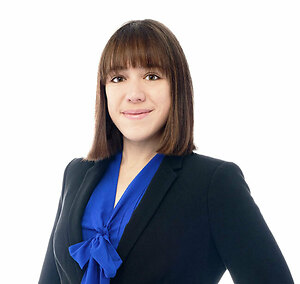Overview
For sale, or not for sale 
That is the question in Larry G. Junker v. Medical Components Inc. et al., case that started in the U.S. District Court for the Eastern District of Pennsylvania and which has now been appealed to the U.S. Supreme Court.
Larry Junker developed an introducer sheath for introducing catheters into veins, and he obtained a design patent (D450839) on elements of the sheath in 2001. In 1999, prior to filing for the patent, Boston Scientific Corporation (BSC) requested a quotation for the sheaths. In response, BSC received a letter with pricing information, shipping information, payment terms, and different purchasing options.
Junker later sued two medical device manufacturers for patent infringement. In defense, the medical device manufacturers claimed Junker’s patent was invalid in view of the quotation to BSC made more than a year before filing the patent application. In the United States, patent applicants have one year from an offer for sale to file a patent application, assuming the invention is at that time ready for patenting.
Whether ‘tis better to delay the possibilities and temptations of great fortune or risk validity and expenses of court by the mere offering.
The U.S. District Court for the Eastern District of Pennsylvania determined the letter to BSC was, in fact, a price quotation and preliminary negotiation, not an offer for sale. Its decision focused on the context of the letter and references to “quotations” and “future discussions” throughout the document. The Court of Appeals for the Federal Circuit (CAFC) reversed, focusing on the level of detail and specific commercial contract terms found in the letter. The CAFC stated the letter “was not an unsolicited price quotation or invitation to negotiate, but rather a specific offer to BSC to take further action,” that is, place an order.
To offer, to risk; but when ‘tis offered by another – ay, there is the rub.
To complicate the facts, the letter to BSC with the pricing information was not sent by Junker himself. The letter was sent by Junker’s former business partner who violated a nondisclosure agreement and then infringed Junker’s patent. Junker is therefore asking the Supreme Court to clarify not only what constitutes an “offer for sale,” but also what distinctions are made between a legitimate offer for sale and an illegitimate, unauthorized offer for sale.
To offer – was harmless, no more…
This case has been appealed to the U.S. Supreme Court to address (1) whether a price quotation may invoke the on-sale bar and be deemed an offer for sale even though it would not be considered an offer for sale by the relevant industry’s standard practice and (2) whether a price quotation may invoke the on-sale bar when made by a third party with no right to make or sell the invention. Until the Supreme Court weighs in on these questions, businesses should consider less is more. Unsolicited quotes, with undefined terms and bounds, are more likely to be considered quotations than documents actively created for a specific entity looking to fulfill a specific need, which the CAFC has in this case deemed to more likely be an offer for sale. Businesses should also monitor employees and third party partners to ensure no one steps outside their role. At this time the CAFC has considered unauthorized action by a business’s consultant, contractor, or other related party to be relevant to the validity of a patent.
Regardless of whether the Supreme Court comments on these issues, and what the outcome is if it does, best practice is to file a patent application sooner rather than later once the invention is mostly fleshed out. Filing a patent application, whether a provisional application or non-provisional application, gives the applicant the ability to use “patent pending” on documents and the freedom to fulfill requests for quotations without risking the validity of a resulting patent.
